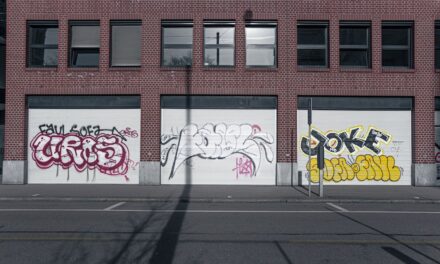Roy Lichtenstein was born on 27 October 1923 in New York City. He was raised in a middle-class family on the Upper West Side. From an early age, Lichtenstein displayed a keen interest in art, dedicating considerable time to drawing and painting.
He attended the Franklin School for Boys, where he received formal training in artistic techniques and honed his skills. Following secondary school, Lichtenstein matriculated at Ohio State University, where he pursued fine art studies and obtained a Bachelor of Fine Arts degree in 1946. During his time at university, Lichtenstein was influenced by the works of artists such as Picasso and Matisse, as well as the emerging Abstract Expressionist movement.
Upon completion of his undergraduate studies, Lichtenstein continued his education at Ohio State University, earning a Master of Fine Arts degree in 1949. This period marked a time of artistic experimentation for Lichtenstein, as he explored various styles and techniques, including Abstract Expressionism and Cubism. Whilst his early work was heavily influenced by these movements, Lichtenstein gradually developed his own distinctive style, which would later be categorised as Pop Art.
His time at Ohio State University proved instrumental in shaping his artistic vision and establishing the foundation for his future success as an artist.
Summary
- Roy Lichtenstein was born in New York City in 1923 and grew up in a middle-class family.
- He studied at the Art Students League and later at Ohio State University, where he was influenced by the work of Picasso and Matisse.
- Lichtenstein became a leading figure in the Pop Art movement, drawing inspiration from comic strips and advertising imagery.
- His iconic artworks, such as “Whaam!” and “Drowning Girl,” used Ben-Day dots and bold colours to mimic the printing techniques of mass media.
- Lichtenstein’s legacy includes influencing a new generation of artists and reshaping the boundaries of art, although he faced criticism for appropriating popular culture.
Pop Art Movement and Influences
The 1960s marked the emergence of the Pop Art movement, and Roy Lichtenstein quickly became one of its leading figures. Pop Art was a reaction against the dominant Abstract Expressionist movement, which focused on emotional expression and gestural brushwork. Instead, Pop Art sought to incorporate popular culture and mass media imagery into art, challenging traditional notions of what constituted “high art.” Lichtenstein’s work often featured imagery from comic books, advertising, and consumer culture, which he reinterpreted through the use of bold colours and Ben-Day dots, a printing technique commonly used in comic books.
Lichtenstein’s work was heavily influenced by the visual language of mass media and advertising, as well as by the work of other Pop artists such as Andy Warhol and Claes Oldenburg. His use of commercial imagery and techniques challenged the distinction between high and low culture, and his paintings often featured larger-than-life renditions of comic book panels and advertisements. Lichtenstein’s work was not only a reflection of popular culture but also a critique of it, highlighting the pervasive influence of mass media on society.
His bold and vibrant paintings quickly gained attention and established him as a key figure in the Pop Art movement.
Iconic Artworks and Techniques

Roy Lichtenstein is best known for his iconic paintings that reimagined popular imagery from comic books and advertisements. One of his most famous works is “Whaam!” (1963), which depicts a dramatic aerial battle scene inspired by a comic book panel. The painting is characterised by its use of bold colours, thick black outlines, and Ben-Day dots, which were used to simulate the printing technique of comic books.
“Whaam!” exemplifies Lichtenstein’s ability to transform mass-produced imagery into high art, challenging traditional notions of artistic value. Another iconic work by Lichtenstein is “Drowning Girl” (1963), which features a distressed woman surrounded by water and speech bubbles. The painting is a prime example of Lichtenstein’s use of comic book imagery to explore themes of love, romance, and melodrama.
His technique of using Ben-Day dots to create a sense of depth and texture became a hallmark of his style, distinguishing his work from that of other Pop artists. Lichtenstein’s paintings often featured strong, confident lines and vibrant colours, creating a visually striking impact that captured the essence of popular culture. Lichtenstein also experimented with sculpture and other mediums, creating three-dimensional works that reflected his interest in mass-produced imagery.
His use of everyday objects and consumer goods as subject matter further blurred the line between art and commerce, challenging traditional notions of artistic value. Lichtenstein’s innovative techniques and iconic artworks solidified his reputation as a pioneering figure in the Pop Art movement.
Lichtenstein’s Legacy and Impact
Roy Lichtenstein’s impact on the art world cannot be overstated. His innovative use of popular imagery and techniques challenged traditional notions of what constituted “high art,” paving the way for future generations of artists to explore new forms of expression. Lichtenstein’s work also had a profound influence on popular culture, inspiring fashion, design, and music.
His bold and vibrant paintings continue to captivate audiences around the world, cementing his status as one of the most influential artists of the 20th century. Lichtenstein’s legacy extends beyond his artistic achievements; he also played a crucial role in shaping the art market and influencing the way art is perceived and consumed. His work challenged the elitism of the art world, making art more accessible to a wider audience.
Lichtenstein’s impact can be seen in the continued popularity of Pop Art and its enduring influence on contemporary art and culture. His legacy lives on through the countless artists who have been inspired by his work and continue to push the boundaries of artistic expression.
Criticism and Controversy
Despite his widespread acclaim, Roy Lichtenstein’s work has not been without its share of criticism and controversy. Some critics have accused him of appropriating popular imagery without adding any significant value or commentary, arguing that his work merely replicated mass-produced images without offering any deeper insight or meaning. Others have criticised his use of commercial techniques such as Ben-Day dots as being too derivative and lacking originality.
Lichtenstein’s work has also been the subject of controversy due to its portrayal of women. Some have argued that his paintings perpetuate stereotypes and objectify women through their depictions of distressed or emotional female characters. Critics have also pointed out that Lichtenstein’s use of comic book imagery often reinforced traditional gender roles and power dynamics, raising questions about the social implications of his work.
Despite these criticisms, Lichtenstein’s impact on the art world remains undeniable, and his work continues to be celebrated for its boldness, innovation, and lasting influence on popular culture.
Personal Life and Relationships

In addition to his groundbreaking artistic career, Roy Lichtenstein led an intriguing personal life. He was married twice; first to Isabel Wilson from 1949 to 1965, with whom he had two sons, David and Mitchell; then to Dorothy Herzka from 1968 until his death in 1997. His personal relationships had a significant impact on his work, with some critics suggesting that his second marriage influenced a shift towards more introspective themes in his later paintings.
Lichtenstein was known for being a private individual who preferred to let his work speak for itself. He maintained a low profile despite his fame and rarely gave interviews or public appearances. His dedication to his craft was evident in his relentless work ethic; he spent long hours in the studio perfecting his paintings and experimenting with new techniques.
Lichtenstein’s personal life may have been shrouded in mystery, but his artistic legacy continues to captivate audiences around the world.
Recognition and Awards
Throughout his career, Roy Lichtenstein received numerous accolades and honours for his contributions to the art world. In 1995, he was awarded the National Medal of Arts by President Bill Clinton for his groundbreaking work in Pop Art. His influence on contemporary art was further recognised with a retrospective at the Museum of Modern Art in New York City in 1993, which showcased over 100 of his paintings, sculptures, and drawings.
Lichtenstein’s impact on popular culture was also acknowledged through various awards and honours from institutions such as the Guggenheim Museum and the National Gallery of Art. His work continues to be celebrated through exhibitions at major museums around the world, ensuring that his legacy remains alive for future generations to appreciate. In conclusion, Roy Lichtenstein’s impact on the art world is immeasurable.
His innovative use of popular imagery and techniques challenged traditional notions of artistic value, paving the way for future generations of artists to explore new forms of expression. Despite criticism and controversy surrounding his work, Lichtenstein’s legacy continues to captivate audiences around the world, solidifying his status as one of the most influential artists of the 20th century. His personal life may have been shrouded in mystery, but his dedication to his craft and lasting impact on popular culture ensure that his legacy will endure for years to come.
If you are interested in learning more about different art movements, you may want to check out this article on post-impressionism. Post-impressionism was a movement that emerged in the late 19th century and included artists such as Vincent van Gogh and Paul Cézanne. This article provides an in-depth look at the characteristics and key figures of the post-impressionist movement, making it a great complement to an introduction to the artist Roy Lichtenstein. You can read the full article here.
FAQs
Who is Roy Lichtenstein?
Roy Lichtenstein was an American pop artist known for his bold, graphic works that referenced popular culture and advertising. He was born in 1923 and passed away in 1997.
What is Roy Lichtenstein known for?
Lichtenstein is best known for his comic book-style paintings and sculptures, which often featured Ben-Day dots, bold colors, and speech bubbles. He is considered a leading figure in the pop art movement.
What are some of Roy Lichtenstein’s most famous works?
Some of Lichtenstein’s most famous works include “Whaam!”, “Drowning Girl”, “Oh, Jeff…I Love You, Too…But…”, and “Look Mickey”. These pieces are iconic examples of his use of comic book imagery and pop culture references.
What influenced Roy Lichtenstein’s art?
Lichtenstein’s art was influenced by popular culture, advertising, and comic books. He was particularly inspired by the visual language and techniques used in comic strips, which he incorporated into his own work.
What techniques did Roy Lichtenstein use in his art?
Lichtenstein’s art often featured a technique called Ben-Day dots, which are small, colored dots used in printing to create shading and secondary colors. He also used bold, black outlines and primary colors to mimic the look of comic book panels.
What is the legacy of Roy Lichtenstein?
Lichtenstein’s work has had a lasting impact on the art world and popular culture. His distinctive style and use of popular imagery continue to influence artists, designers, and filmmakers. He is considered one of the most important figures in the pop art movement.




